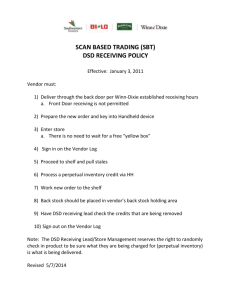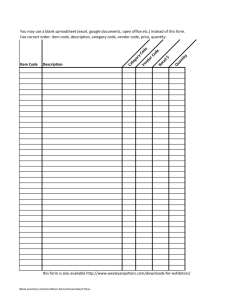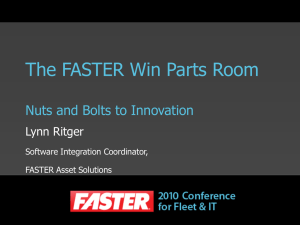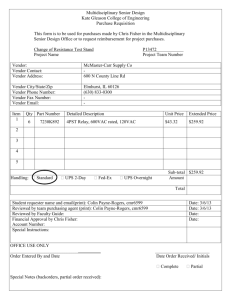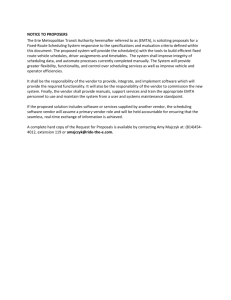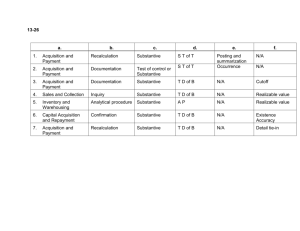Chapter 7: Solutions
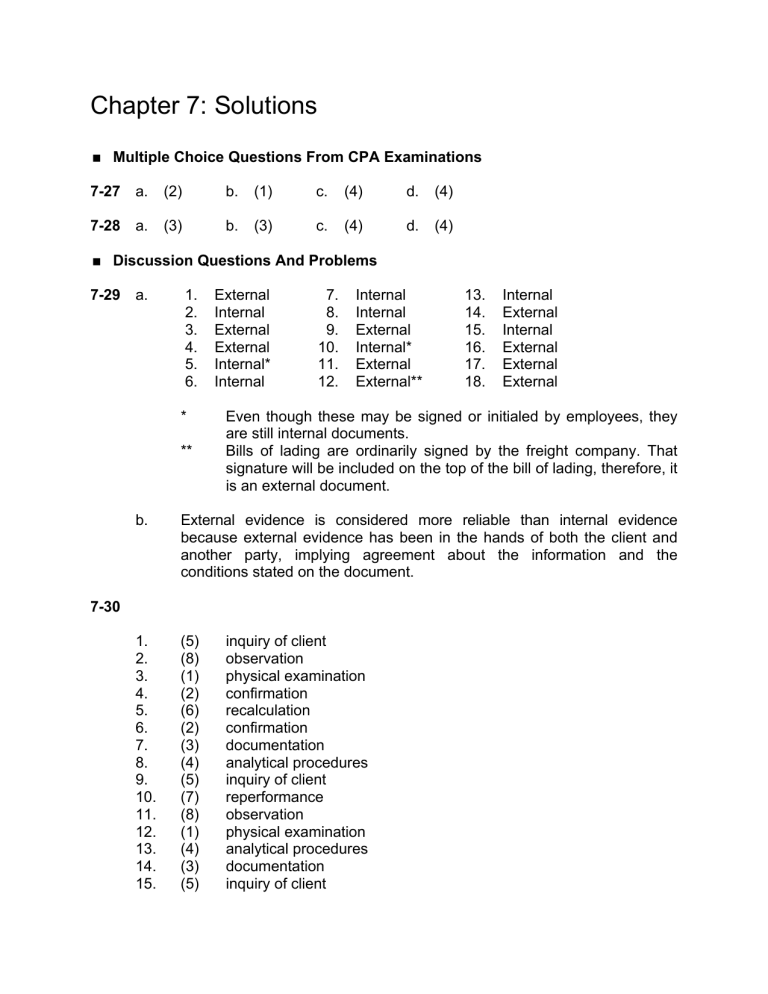
Chapter 7: Solutions
Multiple Choice Questions From CPA Examinations
7-27 a.
7-28 (3) b.
Discussion Questions And Problems
7-29 a. 1. External
2. Internal
7. Internal
8. Internal
3. External
4. External
5. Internal*
6. Internal
13. Internal
14. External
* Even though these may be signed or initialed by employees, they are still internal documents.
** Bills of lading are ordinarily signed by the freight company. That signature will be included on the top of the bill of lading, therefore, it is an external document. b. External evidence is considered more reliable than internal evidence because external evidence has been in the hands of both the client and another party, implying agreement about the information and the conditions stated on the document.
7-30
1. (5) inquiry of client
2. (8) observation
4. (2) confirmation
5. (6) recalculation
6. (2) confirmation
7. (3) documentation
9. (5) inquiry of client
10. (7) reperformance
11. (8) observation
14. (3) documentation
15. (5) inquiry of client
17. (3) documentation
18. (6) recalculation
7-34
20. (2) confirmation a.
TYPE OF
AUDIT EVIDENCE b.
BALANCE-
RELATED
AUDIT OBJECTIVE AUDIT PROCEDURE
1. Test extend unit prices times quantity on the inventory list, test foot the list and compare the total to the general ledger.
2. Trace selected quantities from the inventory list to the physical inventory to make sure that it exists and the quantities are the same.
Physical examination Existence and
Accuracy
3. Question operating personnel about the possibility of obsolete or slow-moving inventory.
Inquiry of the client Realizable value
4. Select a sample of quantities of inventory in the factory warehouse and trace each item to the inventory count sheets to determine if it has been included and if the quantity and description are correct.
Physical examination Completeness and
Accuracy
5. Compare the quantities on hand and unit prices on this year's inventory count sheets with those in the preceding year as a test for large differences.
Analytical procedures Accuracy
6. Examine sales invoices and contracts with customers to determine whether any goods are out on consignment with customers. Examine vendors' invoices and contracts with vendors to determine if any goods on the inventory listing are owned by vendors.
Documentation Rights
AUDIT PROCEDURE a.
TYPE OF
AUDIT EVIDENCE b.
BALANCE-
RELATED
AUDIT OBJECTIVE
7. Send letters directly to third parties who hold the client's inventory and request they respond directly to us.
Confirmation Existence,
Completeness, and Accuracy
7-41 – ACL Problem Solution a. There are 44 payroll transactions in the Payroll file. (This is determined by
reading the number at the bottom of the screen.) b. The largest and smallest gross pay amounts for September are $4,395.83 and $1,278.33, respectively. (Use Quick Sort.) c. Total gross pay for September was $99,585.46. ( Use the Total command.
) d. The report on the following page shows gross pay by department. ( Use the Summarize command on the Gross Pay column, save to a file, and print.
) Note that this screenshot was produced using the “Screen” option in the Output tab of the Summarize window. Students’ hardcopy printouts will appear slightly different, but will contain the same departmental totals.
7-41 – ACL Problem (continued)
Report for requirement d: e. There are no exceptions in the calculation of net pay for September. ( Use the following Filter: Gross Pay – Taxes < > Net Pay.
) f. There are no duplicate check numbers. ( Use the Duplicates command on the check [cheque] number column ). There are four missing checks
(#12389 - #12392). The audit concern is that there may be unrecorded payroll transactions. ( Use the Gaps command on the check [cheque] number column.
)
11-33 – ACL Problem a. The invoice amount column totals $278,641.33. b. There are no exceptions in the calculation of unit cost x quantity. (Create a filter with the expression Unit_Cost * Quantity <> Invoice_Amount.) c. There are three items where the unit cost exceeds $100 (product #
090584072, 090585322, and 090081001). See the following printout. (Filter used Unit Cost >100.)
Page 1
Produced with ACL by: ACL Educational Edition - Not For Commercial Use
INV.DATE INVNO PRODNO QUANTITY VENDOR_NO INVOICE_AMT UNIT_COST
10/21/2002 87 090584072 41 11475 7125.80 173.80
10/21/2002 22 090585322 29 11837 3996.20 137.80
04/09/2002 467.40 155.80
73 11589.40 467.40 d. The three vendors with the largest total dollars for 2002 were: vendor #s
10025, 11475, and 12130. (Summarize by vendor number, then Quick
Sort to find the largest three.) e. The following amounts are over $15,000: vendor #10025 for $56,767.20, vendor #11475 for $20,386.19, and vendor #12130 for $15,444.80. [Filter used is (VENDOR_NO = “10025” OR VENDOR_NO = “11475” OR
VENDOR_NO = “12130”) AND INVOICE_AMOUNT > 15000.] f. See the following printout. (Filter, then print report). Total transactions for vendor #10134 = $22.618.62. (Edit filter to include only vendor #10134 and use Total command)
Page 1
Produced with ACL by: ACL Educational Edition - Not For Commercial Use
INV._DATE INV._NO QTY VENDOR_NO
09/29/2002 030303343 100 10134 883.00 8.83
04/09/2002 090081001
02/14/2002 052484405
3 10134
115 10134
1240
467.40 155.80
561.20 4.88
33686.82 256.00
